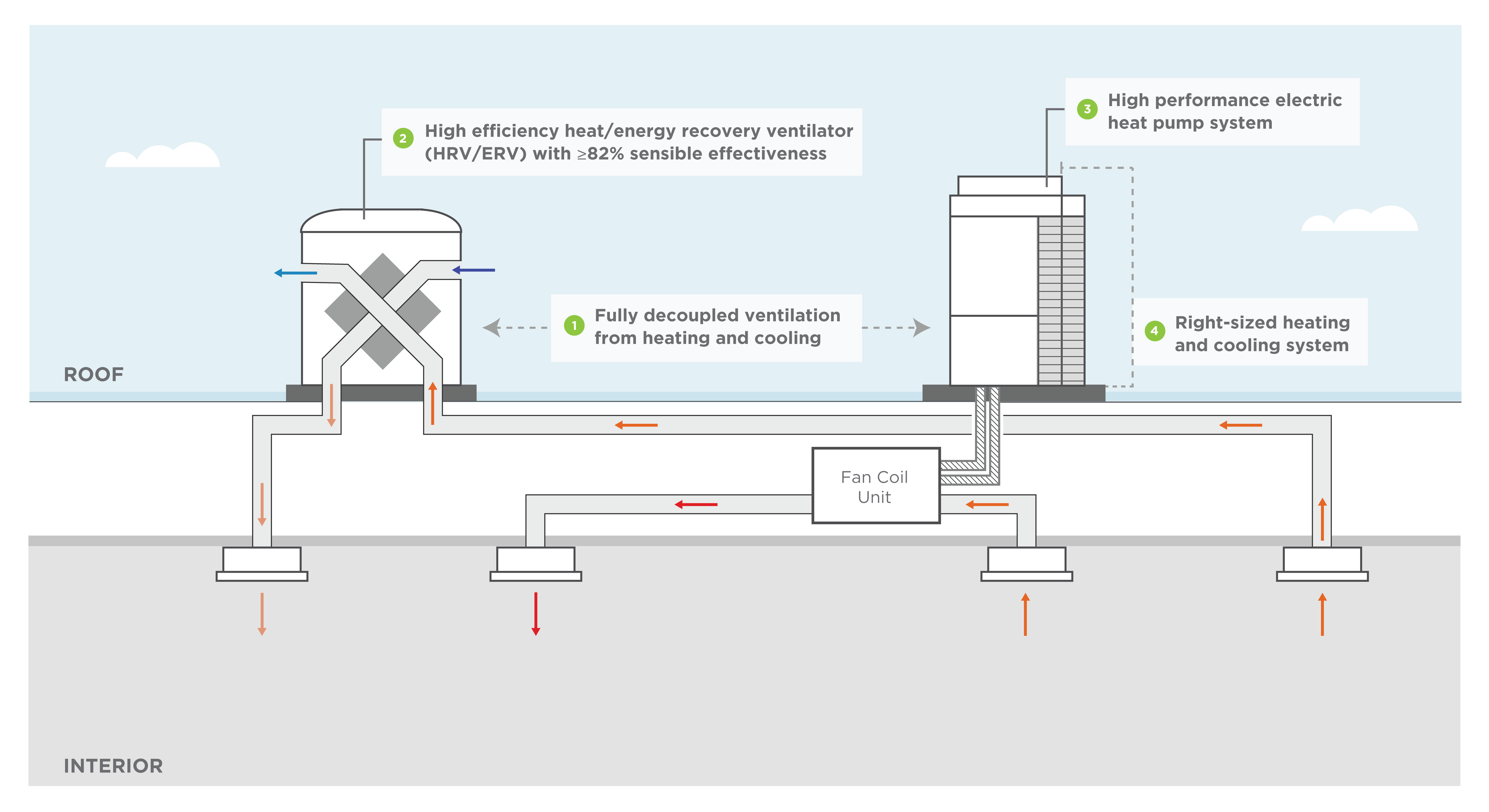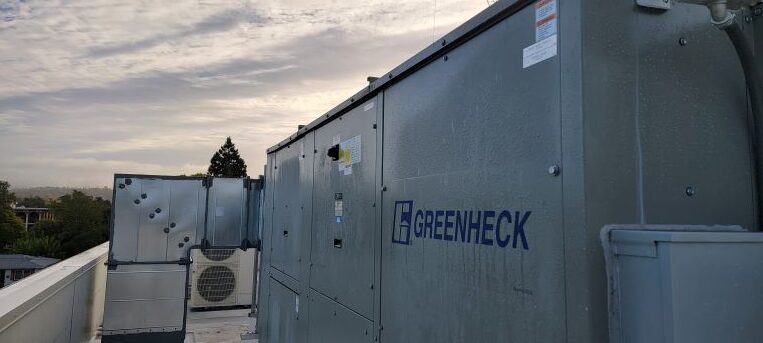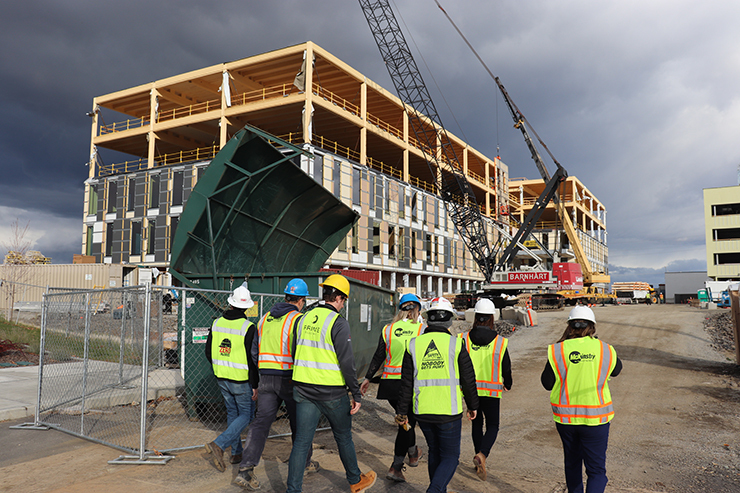4 Reasons to Upgrade Your HVAC Using a Very High Efficiency DOAS Approach
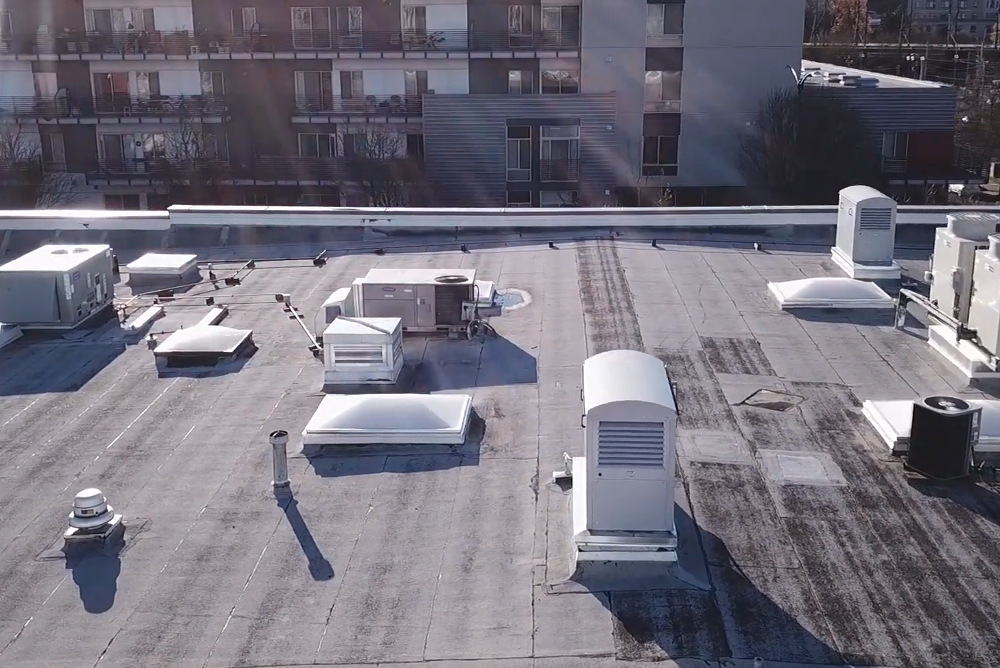
When looking to upgrade from a conventional HVAC system, architects, engineers and building managers may look to one promising HVAC approach: a very high efficiency dedicated outside air system (DOAS). We’ve gathered four key facts on how very high efficiency DOAS can improve energy efficiency, indoor air quality and tenant comfort.
BUT FIRST - WHAT IS A VERY HIGH EFFICIENCY DOAS?
Very high efficiency DOAS improve the efficiency of a more conventional DOAS approach by:
- Fully decoupling heating and cooling from a building’s ventilation system to provide optimal control of each critical function,
- Pairing a high-performance heating/cooling system with a very high efficiency heat recovery ventilator (HRV) or energy recovery ventilator (ERV) with >=82% sensible effectiveness,
- Optimizing the system design by appropriately sizing equipment and minimizing fan power by using design principles to minimize pressure drop and operate ventilation fans at ideal conditions.
Looking for a more detailed look at very high efficiency DOAS? We have several resources to help you decide what’s best for you.
FACT 1: VENTILATION IS SEPARATED FROM HEATING & COOLING
Decoupling these systems from each other is a defining feature of the very high efficiency DOAS approach. One of the key benefits is that this approach uses a dedicated fresh-air ventilation system that’s independent from the heating and cooling system. The ventilation system brings fresh air directly from outside, filters it, tempers it to within a few degrees of the inside air with high efficiency heat recovery and distributes it throughout the building with ductwork independent of the heating and cooling system. The primary component of the ventilation system is a high-performance heat recovery ventilator (HRV) or energy recovery ventilator (ERV) which conditions most of the ventilation and exhaust air in the building with little-to-no mechanical heating or cooling.
While the separation of systems may seem counterintuitive compared to traditional HVAC, the advantage is optimal and independent control over each system and shorter duct runs, leading to greater efficiency and better air quality for tenants (more on that below).
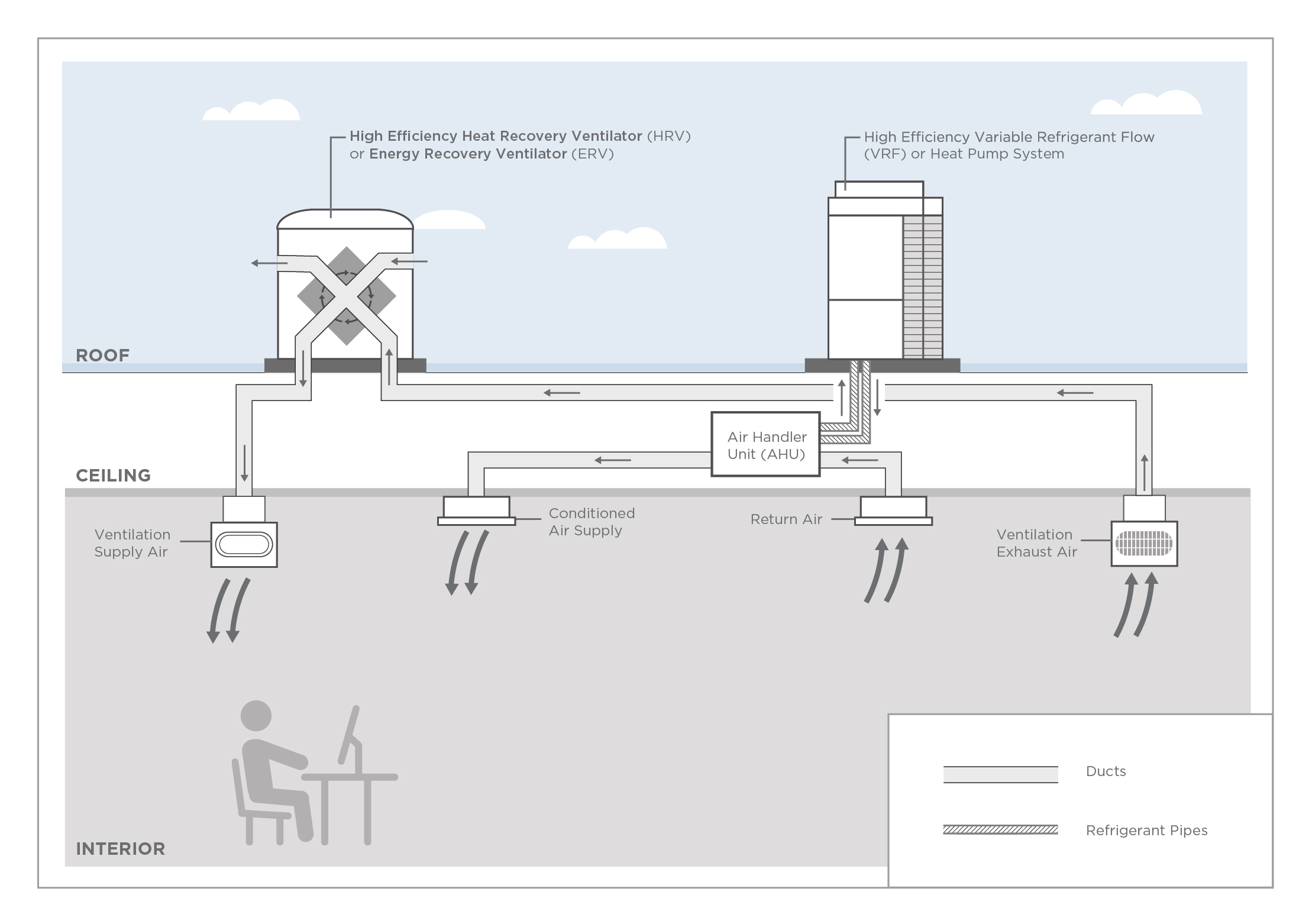
This schematic shows how ventilation air and air from the heating and cooling system are brought into and removed from the space using separate systems. This configuration shows a variable-refrigerant flow (VRF) heating/cooling system, though many other high-performance systems can be used in a very high efficiency DOAS approach.
FACT 2: RIGHT-SIZED HVAC REDUCES FIRST COST AND IMPROVES EFFICIENCY
An oversized HVAC system can unnecessarily increase installation and operating costs and waste more energy than optimally sized systems. Improvements in lighting power density, plug loads and envelope, coupled with overly-cautious estimations of heating and cooling loads, often result in new HVAC equipment in existing buildings being oversized.
Thanks to the decoupling of systems and use of high-efficiency HRV/ERV technology which nearly eliminates the ventilation load, peak and average heating/cooling loads are reduced. This allows for the downsizing of the heating and cooling system in comparison to an existing or new code minimum HVAC system. This appropriate sizing of the heating/cooling equipment reduces the amount of short-cycling during part-load conditions because smaller equipment generally has lower minimum speeds and therefore can run continuously more often. The end result is lower first cost and better performance.
FACT 3: THE COST SAVINGS ARE WORTH IT
Just how efficient is a very high efficiency DOAS compared to other approaches? A recent pilot that tested the before and after energy performance on eight commercial buildings in the Northwest found that very high efficiency DOAS can reduce commercial building energy use by an average of 36% and HVAC energy use by an average of 65% when compared to a code-minimum system upgrade.
What’s more, very high efficiency DOAS has a better return on investment (ROI) than other less efficient DOAS and conventional HVAC designs. In a recent analysis, a very high efficiency DOAS approach demonstrated the shortest payback period across Northwest climate zones when compared to alternative DOAS configurations.
FACT 4: VERY HIGH EFFICIENCY DOAS ALSO IMPROVES INDOOR AIR QUALITY
While improved energy efficiency has traditionally been a key motivator for upgrading to a high-performance HVAC system, the potential benefits for air quality and comfort are a growing factor in the decision to upgrade.
Very high efficiency DOAS offers better air quality than conventional HVAC systems because it brings in filtered 100% fresh outdoor air where and when occupants benefit from it the most. Conventional systems typically pass room air through a low efficiency filter and mix it with the incoming outdoor air stream. Outside of hospitals which use powerful air filters designed to trap a wide range of particles, the conventional approach does little to stop the spread of pathogens indoors.
Watch BetterBricks HVAC expert John Jennings talk about very high efficiency DOAS on our YouTube channel.
Read more on very high efficiency DOAS

